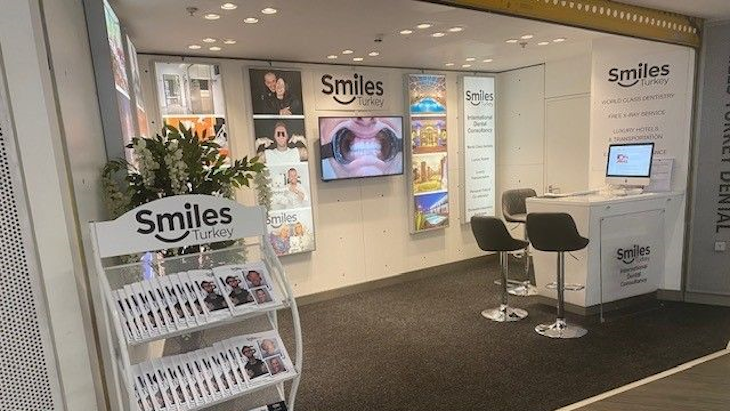Compare costs
Average cost of treatment in key countries
Include indicative costs for treatment, travel, insurance and accommodation
Get a quote
1. Complete the enquiry form
2. Select countries of interest
3. Providers respond directly
Dr Triantafyllos Vrizas, Head of the Plastic Surgery Department at GENESIS Hospital in Thessaloniki, Greece looks at who rhinoplasty may benefit and what the procedure involves.
Despite being one of the most common procedures in plastic surgery, rhinoplasty remains one of the most technically demanding.
Rhinoplasty may decrease or increase the size of the nose, change the shape of the bridge or edge of the nose, narrow or broaden the nostrils, change the angle between nose and lip or correct nose curvature in any direction. The procedure may also correct congenital or acquired malformations and resolve certain respiratory problems.
It is performed considerably more frequently among women, but the number of men visiting plastic surgeons for rhinoplasty keeps increasing, making rhinoplasty one of the most common procedures for men.
The best candidates for rhinoplasty are those who are seeking improvement rather than perfection for their nose.
Thus, psychologically and physically healthy patients with realistic expectations should enjoy the best results from this procedure and boost their self-confidence. It is well known that on the beauty scale (poor, average, good, very good, excellent), even the very best surgeon's work may result in a two-step shift.
Most surgeons avoid operating on young individuals, under the age of 16 for women and 18 for men.
In the hands of a specialised plastic surgeon, rhinoplasty is a safe procedure leaving no apparent marks, with rare complications.
However, problems involving anaesthesia, infection and rhinorrhagia may occur, but can be easily addressed.
One in ten patients may need to undergo a minor corrective procedure to address small imperfections. The occurrence of such imperfections in unpredictable and may occur in patients in the hands of even the most experienced and skilled surgeon. We must always bear in mind that the difference between good and poor results in rhinoplasty can be measured in millimetres.
Good communication between the patient and the surgeon is essential. Patients who recognise and focus on the problems concerning their nose and who are not seeking a “beautiful nose” in general are ideal candidates for the procedure. The plastic surgeon will assess the patient's nasal history and anatomical structures, design a tailored approach, and set out a pre-operative plan to meet the patient's expectations, before proceeding with photography. Proportions between the sections of the nose and its ratio to the rest of the face must be taken into account. After photographs have been taken, detailed measurements of face and nose ratios are recorded. Generally speaking, the nasofacial angle (the angle of the nose in relation to the face) is 34-35°, while the nasolabial angle ranges between 100° and 108° in women and between 90° and 100° in men.
The surgeon gives specific instructions on how to prepare for the procedure, on facial care, nutrition, smoking, drinking, as well as avoidance of medication and vitamins.
The procedure takes place at a clinic or hospital, usually under general anaesthesia (minor interventions may take place under local anaesthesia or sedation). The procedure lasts approximately one hour, while more complex procedures may require longer than two hours. The most commonly used method is ‘closed’ rhinoplasty, where all incisions are internal. However, in the event of major malformation at the tip of the nose or revisions, the ‘open’ method is preferred, adding a minor incision to the middle of the columella. The ‘open’ technique has expanded the horizon for reconstruction and has helped surgeons tackle complex problems; however, it is not the procedure of choice for typical, routine rhinoplasty that concerns the overwhelming number of patients, because it requires more time in surgery and causes extensive post-operative oedema.
Inhaling is a factor that must also be considered. Following diligent examination, the surgeon has to identify and address any functional problems (with the assistance of an ENT specialist, if needed).
At the end, a cast is put in place in order to preserve the new nose shape, and the nostrils are plugged to control secretions.
During the first 24 hours, there will be intense swelling in the face, black circles under the eyes that will subside after 10 to 12 days, mild headaches and intense discomfort due to the the patient’s inability to breathe through the nose.
Swelling will worsen during the next 2 days, but will gradually subside, and respiration will considerably improve after removal of the plugs on the first post-operative day. The cast will be removed after one week and swelling will dramatically reduce in 20 to 30 days. Despite the fact that patients will be able to return to work in 7 to 10 days, the nose will acquire its final appearance in 3 to 6 months, which is when the post-operative photographs will be taken. After the cast is removed, monthly post-operative consultations will take place for one year.
The nose is the most prominent facial feature. Changes will be visible even in the event of minor interventions. Patients will require some time in order to ‘get used’ to their new appearance. Their initial surprise will be followed by a period of adjustment until full acceptance takes place and self-confidence and self-esteem are boosted.
The environment and the patient's reaction to their new appearance will play a key role during this period. We must not forget that it is ‘invisible’ rhinoplasty that achieves optimal results. It is what patients prefer, precisely because it allows them to be more easily accepted by those around them.
GENESIS Hospital in Thessaloniki, Greece is an internationally-accredited private women's hospital specialising in obstetrics, gynaecology, cosmetic surgery and general surgery. With an extensively equipped plastic surgery department and a team of renowned specialist plastic surgeons, the hospital provides a wide range of plastic and aesthetic procedures including rhinoplasty, face and neck lift, blepharoplasty, breast augmentation and liposuction.

Top quality cosmetic, reconstructive and maxillofacial surgery in Belgium, the Singelberg Clinic can offer treatment in either their private clinic or two Belgian general hospitals.
Singelberg Clinic are amongst the few private clinics in Belgium with very strong and safe links to the reputed belgian general hospitals.

